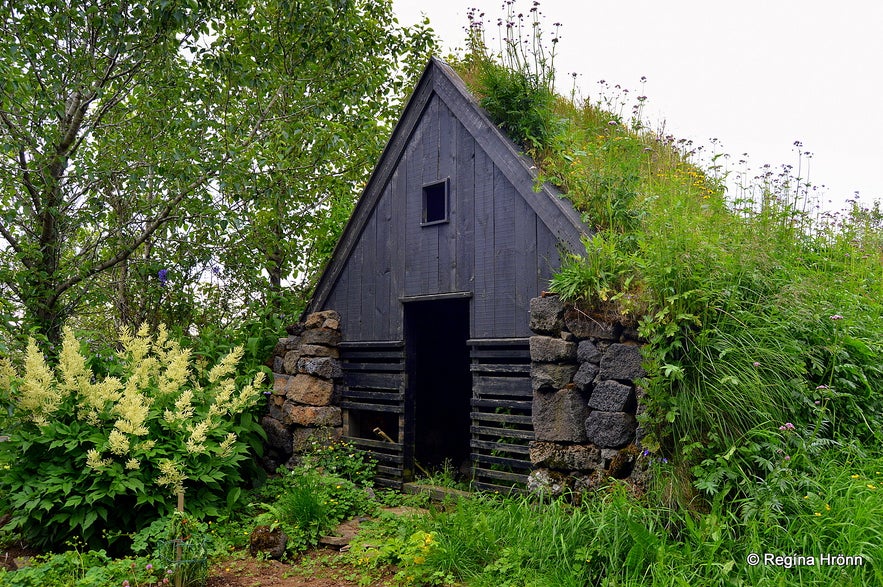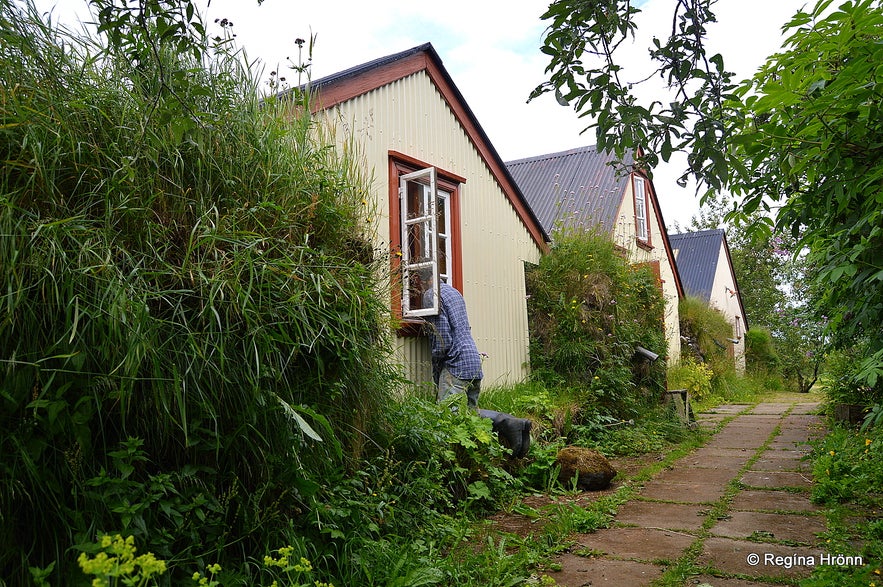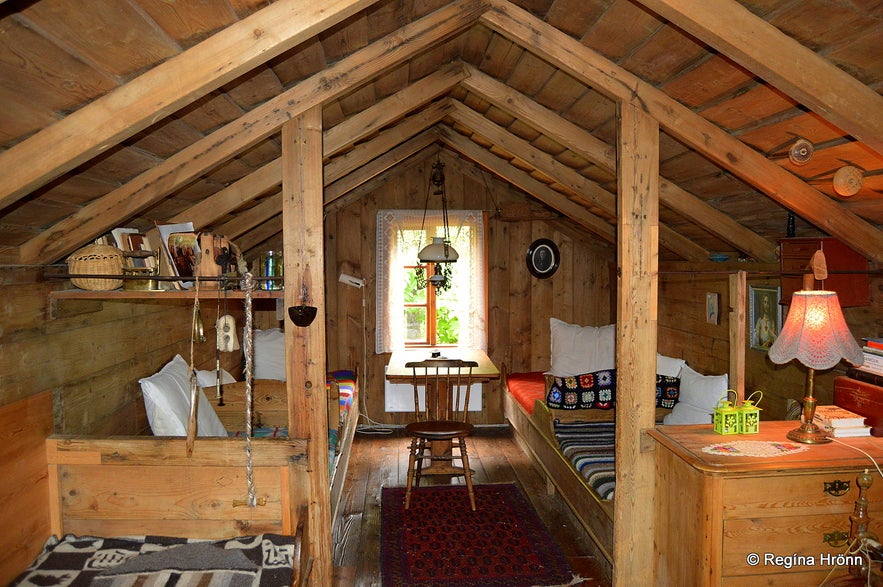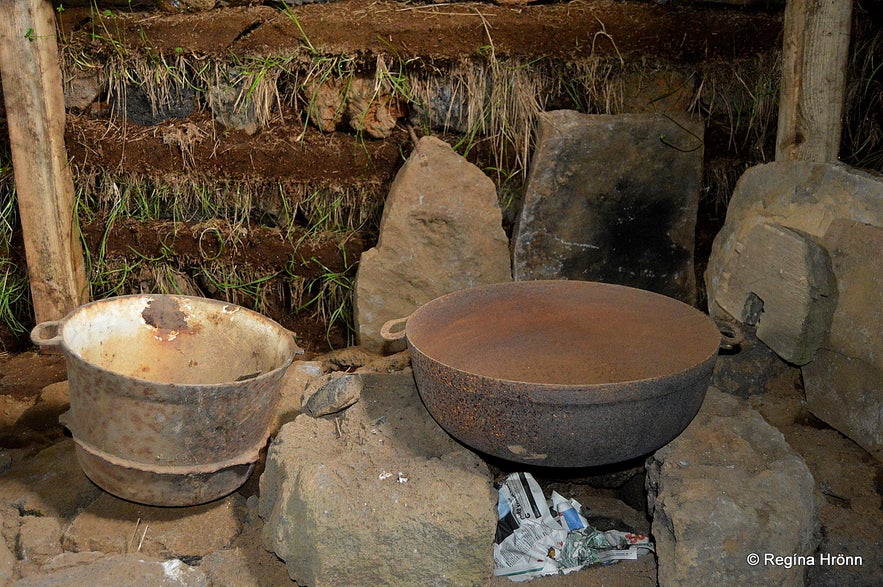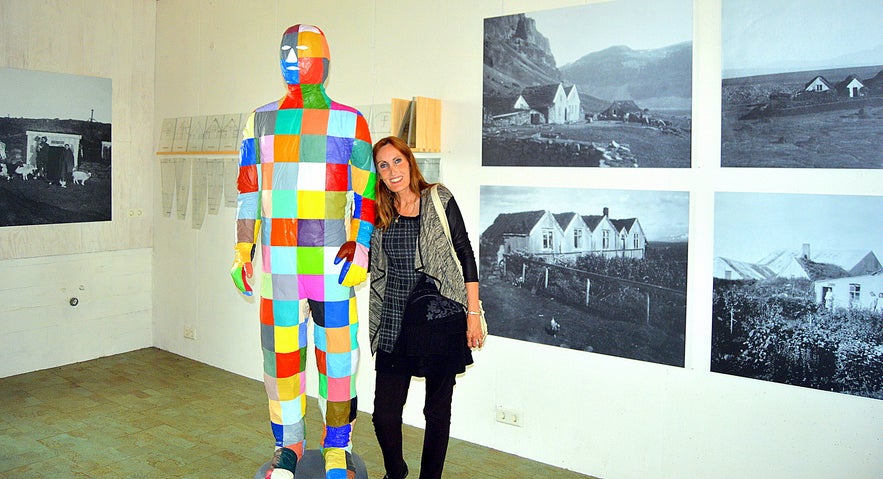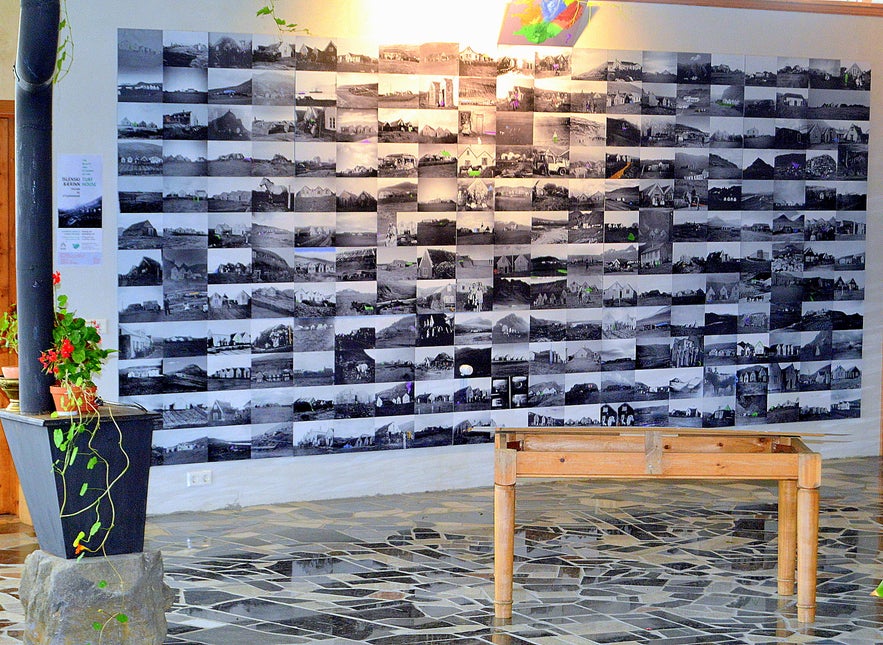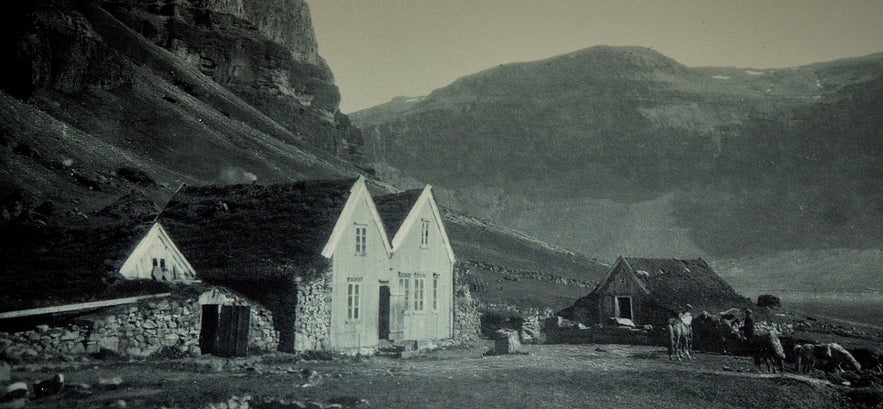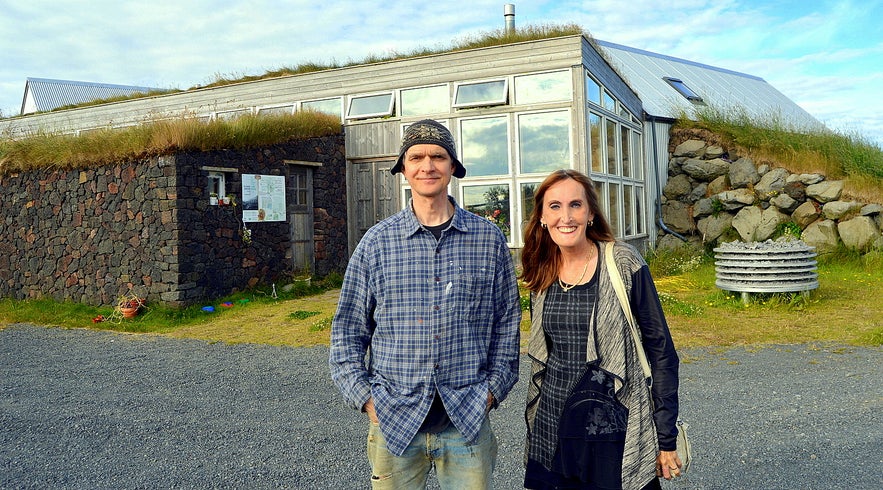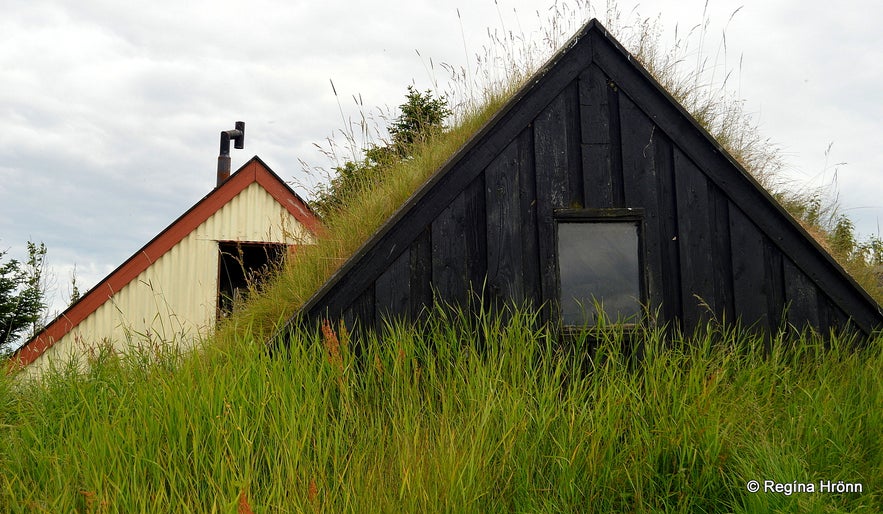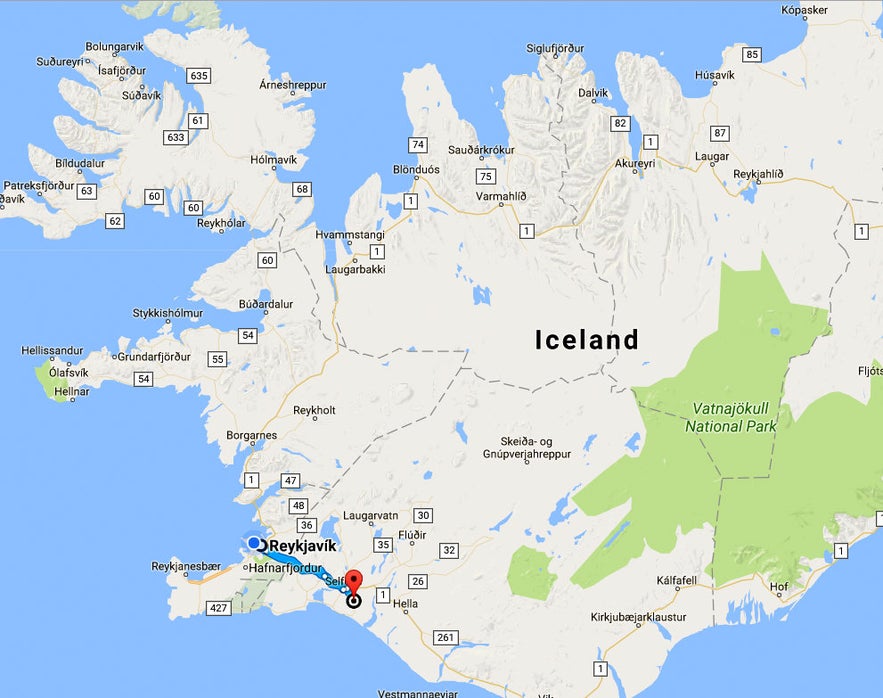
Íslenski bærinn Turf House at Austur-Meðalholt in South-Iceland
Now that I have written about almost all of the remaining turf houses in Iceland I am going to show you the turf farm at Íslenski bærinn at Austur-Meðalholt in Flói in South-Iceland. Íslenski bærinn actually means the Icelandic turf farm.
Almost all of the remaining turf houses and turf churches in Iceland belong to the Historic Building's Collection of Þjóðminjasafn Íslands - the National Museum of Iceland. But not the turf farm of Austur-Meðalholt, it is in the possession of the farmer and artist Hannes Lárusson, who maintains the turf farm himself.
Top photo: an outhouse at Íslenski bærinn
Íslenski bærinn Turf House
The turf houses at Austur-Meðalholt, which date back to the 19th century, are hidden away from sight in a beautiful grove just a short walk from the new building housing the photo exhibition.
The main turf farm consists of 4 houses, a barn and stables - all in all, 8 buildings. Hannes will walk you to the turf farm and show you inside and explain the ways of living in the olden days - or maybe not such a long ago as Hannes himself was raised on this turf farm.
Íslenski bærinn Turf House
There is also a brilliant photo exhibition at Íslenski bærinn, with old photos, drawings and models of old turf houses around Iceland.
On the west side of the turf farm, there is a potato and cabbage plot. As the trees grow so close to the farm then I could only take photos from the side and not of the front of this lovely turf farm. You can see Hannes by the window talking to other visitors while I had a look around the turf farm.
The walls of the turf farm are made with turf and rocks and the gables of the farm are made from timber. The walls and the roof are clad with corrugated iron, but that is a popular thing here in Iceland due to the wet and windy climate. You will see a lot of houses clad with corrugated iron in the old centre of Reykjavík city.
Inside Íslenski bærinn Turf House
Inside the turf farm, you will find the baðstofa or main living room, where people would eat, work and sleep. In all the turf houses the baðstofa was panelled, so on the inside, it looked like a timber house.
When the Austur-Meðalholt turf farm was rebuilt, the entire baðstofa was disassembled and all of the pieces of wood were washed separately with green soap before being put in their right place again.
There is also a hearth kitchen with old pots and pans. And a lovely furnished blue room.
The old kitchen of Íslenski bærinn Turf House
There has been a farm at Austur-Meðalholt for at least 400 years, but the current farm dates back to 1895. In 1896 there was a big earthquake in South-Iceland, but periodically there is a big earthquake in South-Iceland called Suðurlandsskjálftinn or the Southern region earthquake, the last one being in 2008. These earthquakes are caused by the movements of the North-American and Eurasian tectonic plates.
The earthquake in 1896 caused a lot of devastation and several of the turf houses in this area collapsed. Fortunately, the turf farm at Austur-Meðalholt stood upright, probably due to it being newly built.
The turf farm at Austur-Meðalholt is a typical turf farm of the "sunnlenskur" type of farm. Adjacent to the turf farm is a hovel for drying food, a barn and a storehouse.
Inside Íslenski bærinn Turf House
People lived on this farm for the next 70 years or until 1965 when it was abandoned. It stood abandoned for 20 years and was little by little mouldering.
In 1985 the farmers at Austur-Meðalholt started repairing and renovating the turf farm with the help of professionals in this field. And other people who wanted to get to know how to build a turf farm.
There are now courses and lectures on traditional turf building techniques and sustainable living held at Íslenski bærinn in co-operation with the University of Iceland and the Icelandic Art Academy. Hannes has now taught hundreds of people how to build a turf farm.
Inside Íslenski bærinn Turf House
Hannes, who is born in 1955, grew up on his family's turf farm until the age of 9. I have always thought it to be remarkable that my grandmother (born in 1923) grew up on a turf farm in the Westfjords of Iceland.
Hannes must be one of the youngest individuals with memories of living in a turf house.
Together with his mother Ásdís, who also had a passion for rebuilding and preserving the turf farm, and his wife, Kristín, Hannes has done an excellent job.
The photo collection
At the newly constructed sustainable museum building, there is also a great photo exhibition on old turf houses, which is not to be missed. Here you can learn all about this old architectural heritage.
A whole wall is covered with a photo collection of old photos of the Icelandic turf houses, most of which have disappeared.
Also, notice the floor of the museum - it is recycled from marble tabletops, which were to be thrown out - and now create this most beautiful mosaic floor.
The photo collection
I spent way too much time looking in awe at all these old photos of long-lost turf houses. It made me think of the old days when the major part of the Icelandic nation lived in turf houses, both rich and poor. And how this architectural heritage is disappearing.
I am very grateful to the visionaries who understood how important it was to preserve this architectural and national heritage.
The photo below, which is one of the photos at the exhibition, shows what Núpsstaður turf farm looked like in 1918. Notice also the cute little turf church to the right of the turf farm :)
You can see in my travel-blog about Núpsstaður what it looks like now.
Núpsstaður turf farm
Mainly the turf houses and turf churches left in Iceland have been preserved and maintained by Þjóðminjasafn Íslands - the National Museum of Iceland, but there are a few entrepreneurs like Hannes, who have maintained other turf houses or built new turf houses.
Hannes's efforts in preserving this old turf farm should be applauded as we don't want this part of our historical heritage to disappear. When Icelanders moved from the turf houses into more modern houses the turf houses were unfortunately frowned upon.
You can see Hannes in the photo below. In the background is the beautiful sustainable building housing the photo exhibition.
With Hannes at Íslenski bærinn
You can see the opening hours at Íslenski bærinn website. It is well worth the detour popping down to Íslenski torfbærinn in the area Flói in South-Iceland. It is located just 60 km away from Reykjavík city, east of Selfoss town on road 33.
To visit this area you can rent a car in Reykjavík and drive here in an hour or so. This area of Iceland is beautiful and we often drive there from Reykjavík on a day trip.
I would recommend driving further south road 33 and visit the museum village of Stokkseyri.
There you will find the Icelandic Wonders Museum, where you can experience elves and ghosts up close and personal, and the interesting Wildlife Museum, with its myriad of animals and a very knowledgeable proprietor, who happens to be my brother-in-law :)
I have written about all of the remaining turf houses in Iceland in other travel-blogs, seeing that they are very dear to me:
A list of the beautiful Icelandic turf houses I have visited on my travels in Iceland
Have a lovely time in South-Iceland :)
기타 흥미로운 블로그
요쿨살론부터 비크까지, 꽃보다 청춘 5화
드디어 하늘씨과 쓰리스톤즈가 합류했는데요! 설원을 달리는 모습에 저도 아이슬란드가 엄청 그리워졌답니다. 빙하와 빛나는 요쿨살론 첫번째로 향한 요쿨살론(Jokulsarlon)은 아이슬란드의 대표적인 명소 중 하나랍니다. 영어로 Glacier lagoon 이라고도 하는데요. 방송에 나온 것처럼 눈 앞에 보이는 빙하는 빙하수가 흘러서 녹았다 얼었다를더 보기스코가포스 폭포부터 오로라까지, 꽃보다청춘 4화를 따라서
여행 5일째, 포스톤즈가 처음으로 향한 곳은 아이슬란드 남부에 있는 스코가포스 폭포(skogasfoss)입니다. 아이슬란드 남부의 대표적인 폭포 중 하나에요. 방송에서는 들르지 않았지만 스코가포스 거의 바로 옆에 위치한 셀리야란드스포스(seljalandsfoss) 폭포와 함께 같이 들르곤 한답니다. 스코가포스 폭포는 폭포의 물줄기 끝까지 올라갈 수 있단더 보기꽃청춘을 따라서
요즘 인기리에 방영되고 있는 꽃보다 청춘 아이슬란드편! 저도 매주 빼놓지 않고 시청하고 있습니다. 많은 분들께서 포스톤즈의 발랄한 매력과 아이슬란드의 놀라운 경치에 빠져드셨을 것 같습니다! 이번에는 꽃보다 청춘을 따라서 아이슬란드를 한번 가보도록 해요! 사실 아이슬란드가 한국에서 그렇게 가기 쉬운 나라는 아닙니다. 거리도 멀고 항공권도 비싸고! 우더 보기

아이슬란드 최대의 여행 마켓플레이스를 전화에 다운로드하여 전체 여행을 한 곳에서 관리하세요
전화 카메라로 이 QR 코드를 스캔하고 표시되는 링크를 누르면 아이슬란드 최대의 여행 마켓플레이스를 주머니에 넣을 수 있답니다. 다운로드 링크가 포함된 SMS 또는 이메일을 받으려면 전화번호 또는 이메일 주소를 추가하세요.

